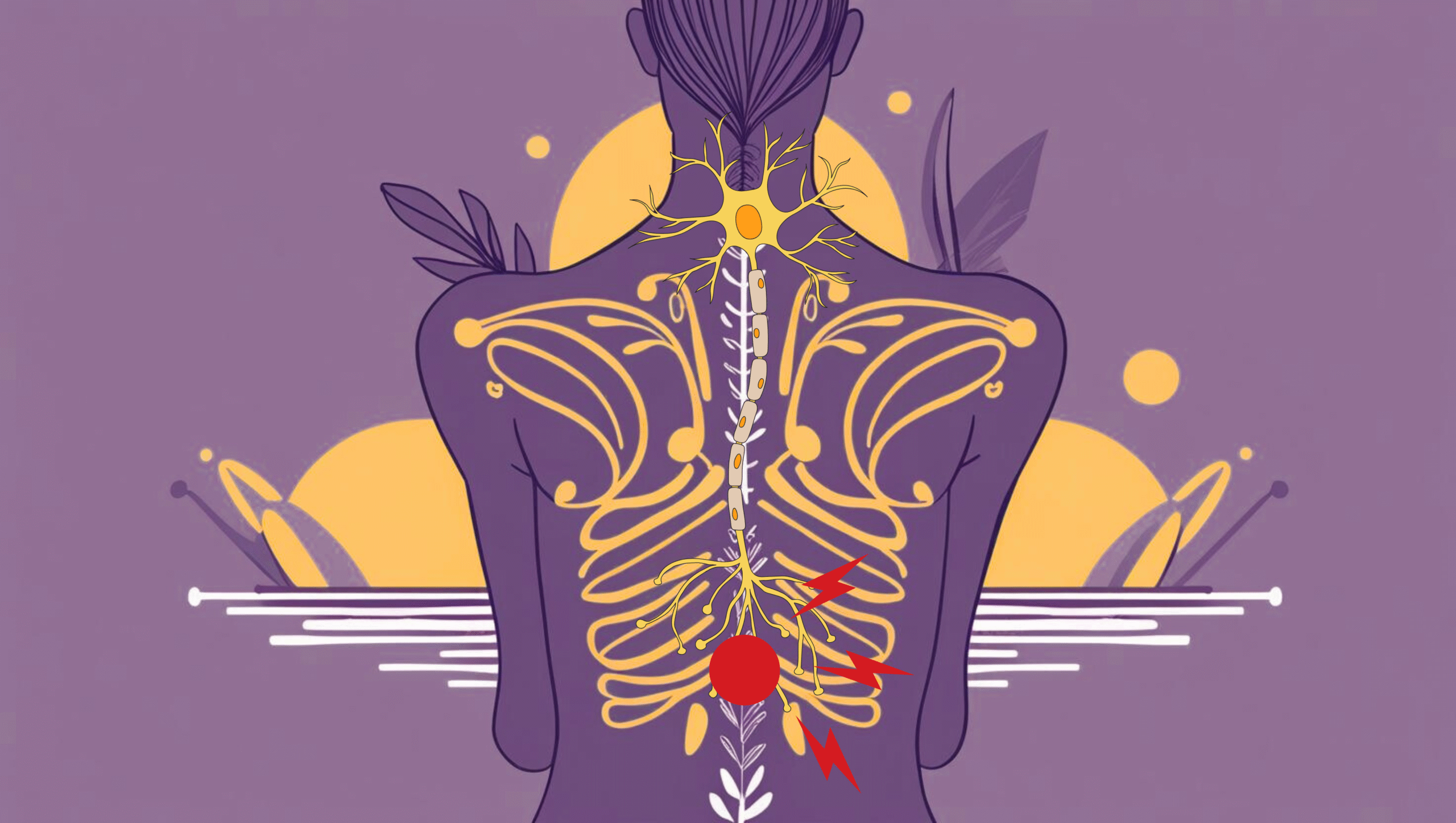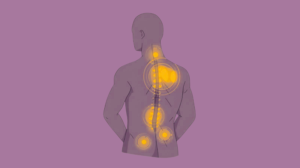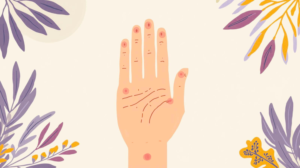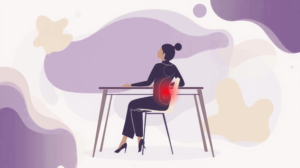Back pain is one of the most common medical complaints worldwide. Among its many causes, nerve compression is a particularly painful and persistent issue that can drastically affect one’s quality of life. Chronic back pain due to compressed nerves often involves underlying spinal conditions that irritate or press on the nerves emerging from the spinal cord.
In this article, we explore what nerve compression is, why it causes chronic back pain, how to identify it, and most importantly, what treatment options exist to find long-term relief.
What Is a Compressed Nerve?
A compressed nerve—also referred to as a pinched nerve—occurs when excessive pressure is applied to a spinal nerve root by surrounding tissues, such as bones, cartilage, muscles, or herniated discs. This pressure disrupts the nerve’s function, leading to pain, numbness, tingling, or weakness in the area served by that nerve.
In the spine, these compressed nerves often occur in the cervical (neck), thoracic (mid-back), or lumbar (lower back) regions, resulting in different patterns of pain depending on the location of the compression.
How Nerve Compression Leads to Chronic Back Pain
When a spinal nerve root is compressed, it can lead to:
- Persistent inflammation
- Reduced blood flow
- Neurological dysfunction
- Ongoing muscle tension
Over time, this leads to chronic pain, which is defined as pain that lasts longer than 12 weeks, even after the initial injury or cause has been treated.
Key Pain Characteristics:
- Localized lower or upper back pain
- Radiating pain (sciatica or cervical radiculopathy)
- Burning or sharp sensations
- Muscle spasms
- Pain that worsens with activity or certain movements
Common Causes of Nerve Compression in the Spine
Several spinal disorders can contribute to nerve compression and chronic pain. Below are the most common:
1. Herniated or Bulging Discs
Discs act as cushions between the vertebrae. When one bulges or ruptures, it can press against nearby nerves.
- Most affected region: Lumbar spine (leading to sciatica)
- Symptoms: Radiating leg pain, numbness, weakness
2. Spinal Stenosis
This condition involves narrowing of the spinal canal, which puts pressure on the spinal cord and nerve roots.
- Most affected region: Cervical and lumbar spine
- Symptoms: Pain, numbness, difficulty walking, or balance issues
3. Degenerative Disc Disease
As we age, spinal discs lose hydration and elasticity, reducing their ability to cushion the vertebrae. This degeneration can cause vertebrae to rub together or herniate, compressing nerves.
- Common in: Adults over 50
- Symptoms: Back stiffness, chronic ache, nerve pain
4. Spondylolisthesis
This occurs when a vertebra slips forward over the one below it, pinching spinal nerves.
- Common in: Athletes and older adults
- Symptoms: Lower back pain, tight hamstrings, leg numbness
5. Bone Spurs (Osteophytes)
These are bony growths that develop on the vertebrae due to arthritis. They can narrow nerve pathways and irritate nearby nerves.
- Common in: People with osteoarthritis
- Symptoms: Stiffness, tingling, pain radiating down limbs
Who Is at Risk?
Several risk factors can increase your chances of developing nerve compression in the spine:
- Age-related degeneration
- Poor posture or ergonomics
- Repetitive lifting or twisting motions
- Sedentary lifestyle
- Obesity
- Spinal trauma or injury
- Genetic predisposition to spinal deformities
Symptoms of Chronic Nerve Compression
While symptoms vary based on the nerve affected, some common signs include:
- Chronic lower or upper back pain
- Pain radiating to limbs (sciatica in the legs, brachialgia in the arms)
- Numbness or tingling in hands, arms, feet, or legs
- Muscle weakness
- Loss of reflexes
- Pain aggravated by sitting, standing, or certain movements
When to See a Doctor
You should consult a healthcare professional if:
- Your back pain lasts more than a few weeks
- Pain radiates to arms or legs
- You experience weakness or loss of bladder/bowel control (a possible medical emergency like cauda equina syndrome)
- Over-the-counter pain relief isn’t effective
How Is Compressed Nerve Back Pain Diagnosed?
1. Physical Exam
Your doctor will check for nerve function, reflexes, range of motion, and pain points.
2. Imaging Tests
- MRI: Most effective in showing nerve compression, disc herniation, and stenosis.
- CT scan: Offers a more detailed bone structure view.
- X-ray: Reveals bone abnormalities like arthritis or fractures.
3. Electromyography (EMG)
Measures electrical activity in muscles and identifies nerve dysfunction.
Treatment Options for Compressed Nerve Pain
1. Conservative (Non-Surgical) Treatments
Most cases of nerve compression respond well to conservative methods:
a. Physical Therapy
Strengthens back and core muscles, improves posture, and enhances spinal flexibility.
b. Medications
- NSAIDs (e.g., ibuprofen) reduce inflammation.
- Muscle relaxants for spasms.
- Nerve pain medications like gabapentin or pregabalin.
c. Hot and Cold Therapy
Ice reduces inflammation; heat improves blood flow and muscle relaxation.
d. Activity Modification
Avoid movements that worsen symptoms. Incorporate rest without becoming inactive.
e. Epidural Steroid Injections
Anti-inflammatory medication delivered directly to the affected area for pain relief.
2. Surgical Treatments
If non-surgical options fail or symptoms worsen, surgery may be recommended:
a. Microdiscectomy
Removes a portion of a herniated disc compressing a nerve.
b. Laminectomy
Removes part of the vertebra (lamina) to relieve pressure in spinal stenosis.
c. Spinal Fusion
Fuses two vertebrae to prevent motion that irritates nerves.
Surgery is typically reserved for severe or unresponsive cases and has a high success rate when performed appropriately.
Lifestyle Changes for Long-Term Pain Relief
- Exercise regularly (low-impact aerobic + strength training)
- Improve posture (especially during work or computer use)
- Maintain healthy body weight
- Use ergonomic furniture and tools
- Avoid prolonged sitting or standing
- Stretch daily to maintain flexibility
Preventing Nerve Compression and Back Pain
While not all nerve compression is preventable, many cases are linked to modifiable lifestyle habits:
- Practice proper lifting techniques
- Quit smoking, which accelerates disc degeneration
- Stay hydrated, as spinal discs rely on water content
- Strengthen core muscles to support the spine
Conclusion
Chronic back pain due to compressed nerves is more than just discomfort—it can be a disabling and life-altering condition if not addressed properly. Understanding the underlying cause, identifying symptoms early, and taking a proactive approach through conservative or surgical treatment can offer significant relief.
Whether you’re already experiencing symptoms or want to prevent future problems, prioritizing spinal health today is the key to a pain-free, mobile life in the years to come.
References
American Academy of Orthopaedic Surgeons. (2020). Herniated disk in the lower back. https://orthoinfo.aaos.org/en/diseases–conditions/herniated-disk-in-the-lower-back
Centers for Disease Control and Prevention. (2020). Low back pain fact sheet. https://www.cdc.gov/arthritis/basics/back-pain.html
Harvard Health Publishing. (2019). Pinched nerve: How to recognize and treat it. Harvard Medical School. https://www.health.harvard.edu/pain/pinched-nerve-how-to-recognize-and-treat-it
Mayo Clinic. (2021). Pinched nerve. https://www.mayoclinic.org/diseases-conditions/pinched-nerve/symptoms-causes/syc-20354746
National Institute of Neurological Disorders and Stroke. (2020). Low back pain fact sheet. https://www.ninds.nih.gov/Disorders/Patient-Caregiver-Education/Fact-Sheets/Low-Back-Pain-Fact-Sheet
National Institutes of Health. (2020). Degenerative disc disease. https://www.niams.nih.gov/health-topics/back-pain
Spine Health. (2020). Understanding sciatica and nerve compression. https://www.spine-health.com/conditions/sciatica
Vos, T., et al. (2020). Global burden of 369 diseases and injuries in 204 countries and territories, 1990–2019: A systematic analysis for the Global Burden of Disease Study 2019. The Lancet. https://www.ncbi.nlm.nih.gov/pmc/articles/PMC7151183/
World Health Organization. (2019). Musculoskeletal conditions. https://www.who.int/news-room/fact-sheets/detail/musculoskeletal-conditions























